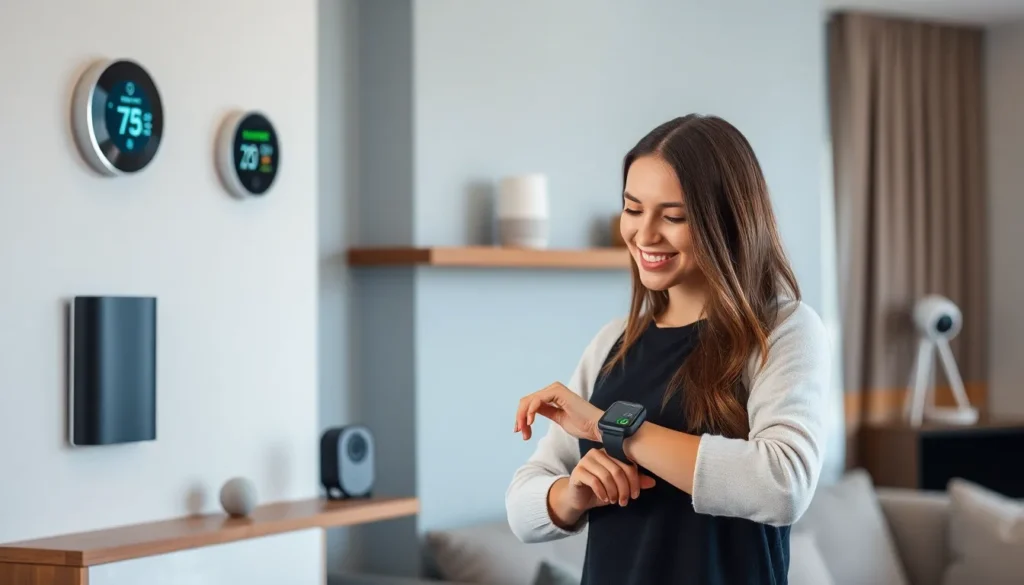Freelancing is like a roller coaster ride—thrilling, unpredictable, and occasionally making you question your life choices. From the blissful freedom of working in pajamas to the heart-stopping moment when the client’s email hits your inbox at 11 PM, every day offers a unique adventure. It’s a life where the coffee flows freely, deadlines loom like storm clouds, and the quest for work-life balance feels like chasing a mirage.
In this article, we’ll dive into the daily life of a freelancer, exploring the highs and lows that come with the territory. Whether it’s the joy of being your own boss or the struggle to resist the siren call of Netflix, the freelancer’s journey is anything but ordinary. Get ready for a humorous yet insightful look at what it really means to navigate the wild world of freelancing.
Table of Contents
ToggleOverview of A Freelancer Daily Life
Freelancers experience diverse routines daily, balancing flexibility with the need for structure. Often, their mornings start with planning tasks for the day, allowing time for coffee and essential emails. Focus becomes key as they tackle projects, often working in bursts to maximize productivity. Distractions commonly arise, whether from social media, household chores, or unexpected visitors.
Lunch breaks play a crucial role. They provide a chance to recharge and revisit priorities for the remaining hours. Some freelancers use this time for networking, connecting with clients or other professionals. Afternoon hours may involve meetings, either virtual or in-person, which can change the original workflow significantly.
Task variety contributes to the excitement. Freelancers engage in different projects, each requiring unique skills and creativity. Clients may have specific needs, pushing freelancers to adapt quickly and find solutions. They also handle administrative duties, such as invoicing, marketing, and managing contracts.
Late afternoons can see a dip in energy. To combat this, freelancers often take short breaks or switch tasks to maintain focus. Evening routines might include wrapping up projects or preparing for the next day. While work-life balance remains a challenge, many freelancers find joy in setting their schedules.
Ultimately, a freelancer’s daily life blends autonomy with the responsibility of self-management. They navigate the highs and lows with resilience, continually adapting to the demands of their work environment.
Morning Routine
Freelancers start their mornings with focused energy and intention.
Setting Up for Success
Establishing a successful morning often begins by creating a dedicated workspace. Arranging materials and tools before diving into tasks helps maintain efficiency. Many freelancers prepare their favorite beverage, often coffee or tea, to boost their motivation. Prioritizing tasks via a planner or digital app provides a clear outline. Reviewing email is essential for staying informed about client updates and project deadlines. Incorporating a brief stretching or meditation session can enhance focus and reduce stress. This preparation creates a strong foundation for a productive day.
Time Management Techniques
Effective time management techniques empower freelancers to maximize their productivity. Implementing the Pomodoro technique encourages concentrated work periods followed by short breaks. Setting specific time blocks for tasks promotes structure and minimizes distractions. Many freelancers also use digital timers to remind themselves to stay on track. Prioritizing the most critical tasks first addresses deadlines effectively. Regularly evaluating progress throughout the day helps in adapting schedules. Utilizing tools like to-do lists and calendar apps keeps freelancers organized and accountable. Adjusting strategies based on personal productivity patterns ultimately leads to greater success.
Work Environment
Freelancers often create unique work environments that boost productivity and comfort. Choices between home offices and co-working spaces greatly influence their daily routines.
Home Office Setup
Home office setups vary significantly among freelancers. Some prefer minimalistic designs with just a desk and ergonomic chair, while others incorporate personal touches like artwork and plants. Creating a designated space helps minimize distractions and establish a productive atmosphere. Essential tools include dual monitors and noise-canceling headphones, which enhance focus. Many freelancers also invest in good lighting to reduce eye strain. Structuring the home office according to personal productivity preferences can lead to significant improvements in output.
Co-Working Spaces
Co-working spaces offer freelancers a vibrant alternative to working at home. These environments foster networking and collaboration with other professionals. Facilities typically include high-speed internet, meeting rooms, and kitchen areas for breaks. Many freelancers appreciate the structured work hours co-working spaces provide, which can help maintain a regular routine. The sense of community encourages motivation, with professionals often bouncing ideas off each other. Choosing a co-working space that aligns with specific work needs can enhance overall productivity and satisfaction.
Typical Workday Activities
Freelancers experience diverse daily activities essential for success. These activities include project planning, client communication, and efficient time management.
Project Planning and Prioritization
Project planning plays a crucial role in a freelancer’s day. Freelancers often start their mornings by identifying tasks and setting clear priorities. Planning involves utilizing digital tools like to-do lists or project management apps to visualize deadlines and milestones. Prioritizing tasks based on urgency and importance ensures critical projects receive attention first. Daily evaluations of progress help them adapt to shifting priorities. Incorporating techniques like the Pomodoro method enhances focus while breaking work into manageable sections. Ultimately, structured planning supports freelancers in maintaining workflow while effectively juggling multiple clients and projects.
Communication with Clients
Effective communication with clients significantly impacts a freelancer’s success. Regular updates on project status prevent misunderstandings and foster trust. Freelancers frequently use email, instant messaging, and video calls to maintain transparent communication. Scheduling check-ins aligns client expectations with project timelines. When negotiating terms or clarifying project details, clear dialogue reduces the opportunity for confusion. Quick responses to client inquiries demonstrate professionalism and commitment. Building rapport promotes ongoing collaboration and can lead to future projects. Overall, prioritizing communication cultivates strong client relationships vital for a freelancer’s long-term success.
Work-Life Balance
Balancing work and personal life is vital for freelancers. They often face the unique challenge of managing flexible schedules while avoiding overwhelming workloads.
Strategies to Avoid Burnout
Setting boundaries plays a crucial role in preventing burnout. Freelancers should establish specific work hours and stick to them. Scheduling regular breaks enhances productivity and allows time for mental recovery. Utilizing the Pomodoro technique promotes focused work sessions, followed by short rest periods. Engaging in physical activities like yoga or walking helps to refresh the mind. Joining networking events or professional groups fosters a sense of community, which combats isolation. Additionally, periodically evaluating workloads enables freelancers to identify excessive demands and make necessary adjustments.
Making Time for Personal Life
Prioritizing personal life is essential for overall well-being. Freelancers can start by carving out time for hobbies or interests outside of work. Designating specific days or times for family and friends strengthens relationships. Planning social activities enhances personal connections and serves as a motivation boost. Allocating time for self-care routines, such as reading or meditating, contributes to mental health. Taking short vacations or weekend getaways also offers a refreshing break. Balancing work tasks with personal time ultimately nurtures a healthy lifestyle and promotes long-term success.
Freelancers navigate a dynamic landscape filled with unique challenges and rewarding experiences. They embrace the freedom to shape their workdays while remaining accountable for their productivity and well-being. By mastering time management and creating tailored work environments, they enhance their efficiency and maintain focus.
The balance between work and personal life is crucial for sustaining motivation and preventing burnout. Through community engagement and self-care, freelancers can foster a fulfilling lifestyle that supports both their professional and personal aspirations. Ultimately, the daily life of a freelancer is a testament to resilience and adaptability in an ever-changing world.









